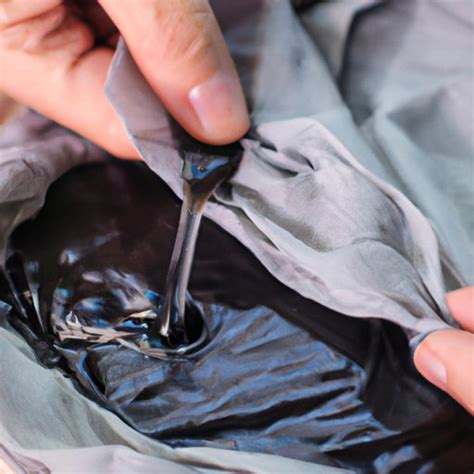In the realm of household mishaps, ink stains reign supreme as one of the most dreaded and vexing adversaries. Whether it’s the dreaded ballpoint pen mishap or an unfortunate spill from a leaky fountain pen, these unsightly marks can cast a shadow over even the most pristine surfaces. But fret not, dear reader, for this comprehensive guide will unveil a treasure trove of techniques and solutions to banish ink stains from your life.

Understanding the Nature of Ink Stains
The key to effectively removing ink stains lies in understanding their chemical composition. Most inks used in writing instruments contain a combination of pigments, dyes, and solvents. Pigments are solid particles that provide color and opacity, while dyes are soluble substances that impart transparency. Solvents, on the other hand, dissolve the other components and allow them to flow smoothly through pen tips.
Effective Strategies for Removing Ink Stains
1. Act Quickly
Time is of the essence when it comes to ink stains. The sooner you act, the greater your chances of successful eradication. Blot up any excess ink immediately with a clean cloth or paper towel. Avoid rubbing or scrubbing, as this can spread the stain and make it more difficult to remove.
2. Identify the Ink Type
Determining the type of ink you’re dealing with can greatly influence your choice of removal method. Here are some common ink types and their respective solvents:
| Ink Type | Solvent |
|---|---|
| Ballpoint Pen | Rubbing Alcohol |
| Fountain Pen | Water or Alcohol |
| Permanent Marker | Acetone |
| Fabric Marker | Bleach (for white fabrics only) |
3. Employ Tested and Proven Solutions
Water: For water-based inks, such as those found in fountain pens and washable markers, simply blot the stain with a damp cloth or paper towel.
Rubbing Alcohol: Isopropyl alcohol is effective in removing stains from ballpoint pens and permanent markers. Apply a few drops to a clean cloth or cotton ball and dab the stain gently.
Acetone: As a powerful solvent, acetone can remove stubborn stains from permanent markers. Use caution and test on an inconspicuous area first to ensure it doesn’t damage the fabric.
Bleach: For white fabrics only, bleach can be used to remove fabric marker stains. Follow the instructions on the bleach packaging carefully to avoid damaging the fabric.
Tips and Tricks for Stubborn Stains
1. Heat the Stain
For fresh stains, applying heat can help loosen the ink and make it easier to remove. Place a damp cloth over the stain and carefully iron it on low heat.
2. Use an Enzymatic Cleaner
Enzymes are biological catalysts that can break down the chemical bonds in ink. Apply a commercial enzymatic cleaner to the stain and allow it to sit for several hours or overnight.
3. Try Hairspray
Hairspray contains alcohol, which can be effective in removing certain ink stains. Spray a small amount onto the stain and blot with a clean cloth.
4. Seek Professional Help
If all else fails, consider seeking professional help from a dry cleaner or fabric restoration specialist. They have access to specialized cleaning agents and techniques that can remove even the most stubborn stains.
Comparing Pros and Cons of Ink Stain Removal Methods
| Method | Pros | Cons |
|---|---|---|
| Water | Safe for most fabrics | Ineffective on permanent inks |
| Rubbing Alcohol | Effective on ballpoint pen and permanent marker stains | Can damage delicate fabrics |
| Acetone | Powerful solvent that removes stubborn stains | Can damage fabrics and cause discoloration |
| Bleach | Effective on fabric marker stains (white fabrics only) | Can damage fabrics and cause discoloration |
| Enzymatic Cleaner | Breaks down ink molecules | Can be expensive |
| Heat | Loosens ink for easier removal | Can damage delicate fabrics |
| Hairspray | Contains alcohol that can remove some ink stains | Can stiffen fabrics |
Novel Applications of Ink Stain Removal Techniques
The techniques described in this guide can be creatively repurposed for a variety of applications beyond ink stain removal. For instance:
- Rubbing alcohol: Can be used to clean electronic devices, remove adhesive residue, and disinfect surfaces.
- Acetone: Can be used to remove nail polish, dissolve super glue, and clean paintbrushes.
- Bleach: Can be used to whiten laundry, remove mildew, and disinfect surfaces.
- Enzymatic cleaners: Can be used to remove stains from carpets, upholstery, and pet bedding.
Conclusion
With the knowledge and strategies outlined in this comprehensive guide, you are now armed with the tools to banish ink stains from your life. Remember to act quickly, identify the ink type, and choose the most effective removal method based on the specific stain. By embracing these techniques and exploring novel applications, you can conquer the scourge of ink stains and restore your surfaces to their pristine condition.
